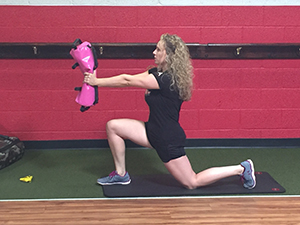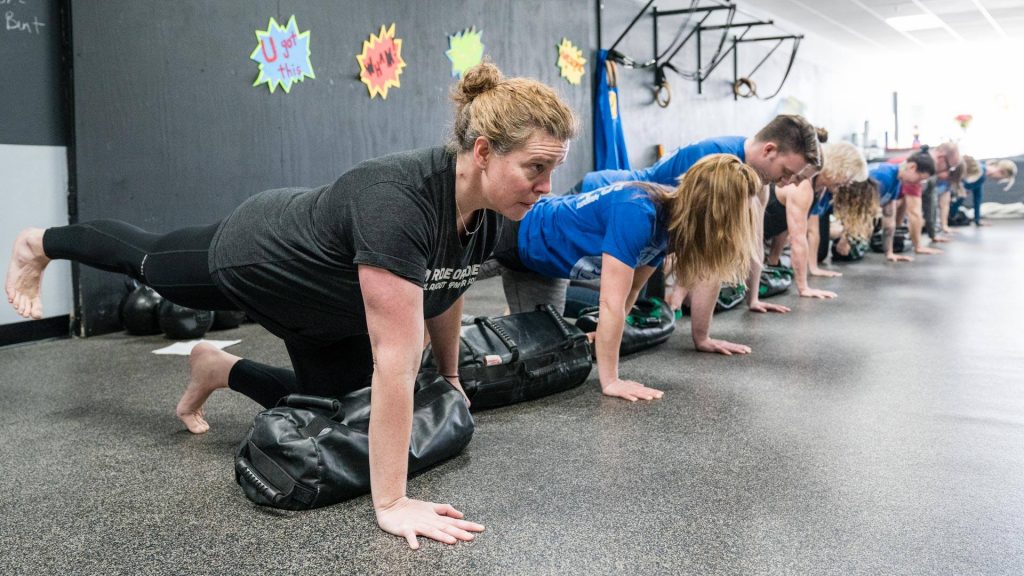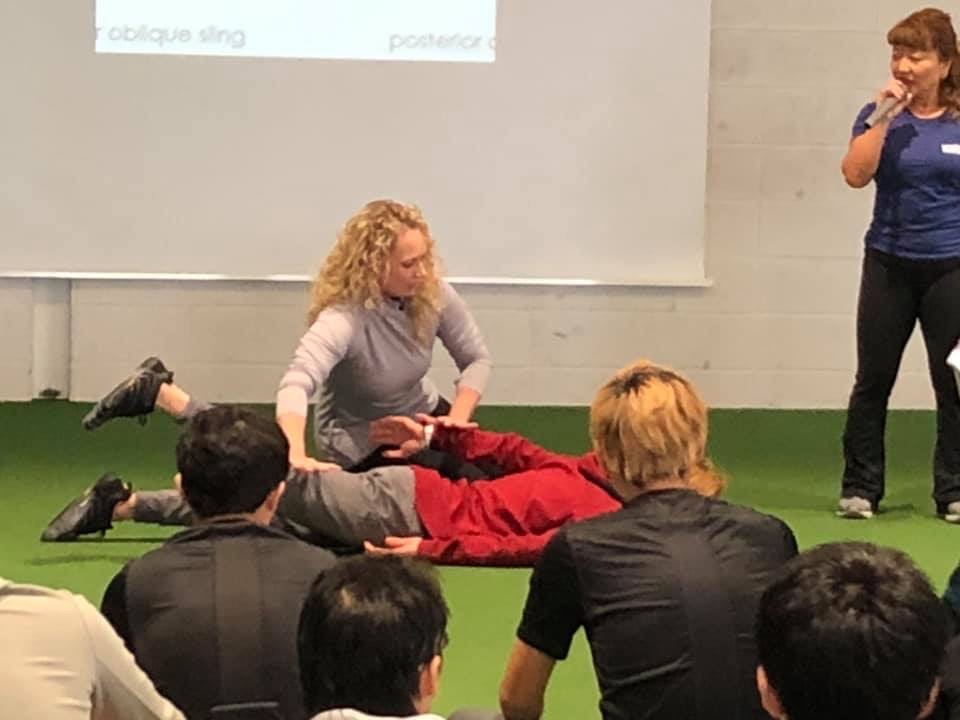Why Core Stability Solves Knee, Low Back & Shoulder Issues
2021-05-16
Jessica Bento, Physical Therapist (Creator of DVRT Restoration, Pelvic, Shoulder, and Knee Corrective Courses, & Better Backs, Knees, and Shoulders)
Few things are going to stop a well intentioned fitness program as injury or pain. There are no shortage of programs in the fields of fitness, strength & conditioning, and of course physical therapy that will tell you that they have the solution. I know we do the same at DVRT, but I truly believe that from what I’ve seen both in fitness and as a physical therapist for 15 years, is that what we teach is really unique.
Yea, yea, everyone says that right? Well, that is why I wanted to explain some of the concepts that help demonstrate not that DVRT is just unique, but actually one of the most effective programs you can use to help reduce the chances of injuries occurring and helping people that are battling some of those chronic aches and pains.

I’ve been fortunate to share our DVRT ideas about improving movement and health at national conferences and places like the UFC Performance Center here.
When I think of the issues that are most commonly at the root of people’s complaints, it is typically shoulders, knees, and low backs. This isn’t just a coincidence, but there is a specific reason that we keep seeing this to be the case, because in reality, these three areas of the body are typically very connected!
Unless you have a direct trauma happen to an area of your body, like the time I had a patient that had hip surgery because an elephant crushed her against a tree (a true story!), we often see these areas as being the end result of a bigger issue. Even if you do have that direct trauma, we are going to use similar principles to make you better.
The Foundation of Success: Core Stability
You hear this term ALL the time, yet, we generally do a pretty poor job of defining it. While ther are many different definitions, the good ones are typically very similar.
“True spine stability is achieved with ‘‘balanced’’ stiffening from the entire musculature, including the rectus abdominis and the abdominal wall; quadratus lumborum; latissimus dorsi; and the back extensors of longissimus, iliocostalis, and multifidus. Focusing on a single muscle generally does not enhance stability but creates patterns that when quantified result in less stability…Adding the specific transverse abdominis training reduced efficacy. Instead, the abdominal brace (contracting all abdominal muscles) enhances stability.”-McGill, Stuart PhD Core Training: Evidence Translating to Better Performance and Injury Prevention, Strength and Conditioning Journal: June 2010 – Volume 32 – Issue 3 – p 33-46 doi: 10.1519/SSC.0b013e3181df4521

“…the ability to control the position and motion of the trunk over the pelvis and leg to allow optimum production, transfer and control of force and motion to the terminal segment in integrated kinetic chain activities.”-Kibler WB, Press J, Sciascia A. The role of core stability in athletic function. Sports Med. 2006;36(3):189-98. doi: 10.2165/00007256-200636030-00001. PMID: 16526831.
You quickly realize that core stability isn’t just working this or that abdominal muscle or no one muscle of the trunk is more important than another. It IS about how these muscles work synergistically to provide that stability needed for the body to have the stable platform to exert force and the nervous system to turn off the breaks of the body.
How do we train core stability correctly? There are a lot of exercises we could use, but instead of just showing you some random movements for core stability I’d rather help you understand concepts that allow you to appreciate where we can start with our core stability training and how we progress it in an incremental manner.
Teaching To Brace
An important concept to understand in building core stability is building the “bracing” action of the core that helps us build that stability. Typically most default to planks which by themselves planks are a good exercise. However, many people starting a fitness program or have a wide array of issues (we could be talking someone overcoming an injury, someone very de-conditioned, someone very overweight, or an elderly person, there are many more examples) is going to have a very hard time doing planks the way we need to perform them to get the benefit of bracing.
Fitness pros and even my fellow therapists tend to overestimate how difficult it is for many people to hold their own bodyweight in the plank position and create proper force into the ground. Instead, we like to begin people with our Press Out progressions. Using our Press Outs we can take off how much load the person is supporting and use specific progressions of the movement that teach how to keep the connections of the body in place that allows us to learn to brace properly.

View this post on Instagram
We can use these concepts in more dynamic environments to help teach how to perform movements that often results in complaints in the knees and doing the Press Out correctly helps our low back though greater core stability and our shoulders through the same mechanisms.
View this post on Instagram
The Overlooked Plank
We can use a wide array of Press Outs to build that core stability that has amazing transfer to our three big common problem areas. Over time we can progress to getting closer to a plank, but not planking quite yet, but using a drill that is just as amazing and maybe even more so!
The bird dog has made a comeback in recent years (we like to think we play some small part in that) and that is an awesome thing to see because the benefits of the bird dog are many! We can learn the concepts of a plank in not as challenging of an environment, we learn how to resist rotational and lateral forces which is HUGE for good core stability, and we develop foundational pressing and hip hinging patterns. A lot of good stuff right there right?

Sadly, like so many movements, people only see the bird dog one way or aren’t sure what version to use in their training. Below we break down the important how’s of using the bird dog for proper core stability training and then we show how we use specific progressions of our DVRT system to illustrate how we progress with great purpose in mind.
View this post on Instagram
Most people think that heavier loads are the goal of the bird dog and that is actually BACKWARDS thinking as I’ll explain in a post coming tomorrow!
Resisting Unwanted Movement
This too is a topic that I am happy is getting a bit more play in the fitness and health world. However, because it is a new idea for many, it too can get misused and misunderstood. Learning to resist force is a key part of good core training. Yet, we tend to think of this largely in terms of just a variety of planks. While those can be great for building core stability as we have already discussed, the goal isn’t to perform endless planks but to move these concepts to more challenging environments.
View this post on Instagram
Above are some great demonstrations of these concepts and show the many levels we can use and how different tools will help us teach how not just to load our body, but to be used to enhance lessons of good core stability. In upcoming posts I’ll break down many of these movements and how we get there, but right now I wanted to set a foundation where you walk away feeling like you have a much better understanding of what core stability is suppose to be and why it is so essential in helping many of the common complaints we see in training.
Don’t miss the release of Jessica’s NEW Better Backs, Knees, & Shoulders 2.0 program for 30% (this week only) with code “better” HERE , you can also save big on her courses and certification programs that delve deep into how we use DVRT to help solve the movement issues of many people.

© 2025 Ultimate Sandbag Training. Site by Jennifer Web Design.







